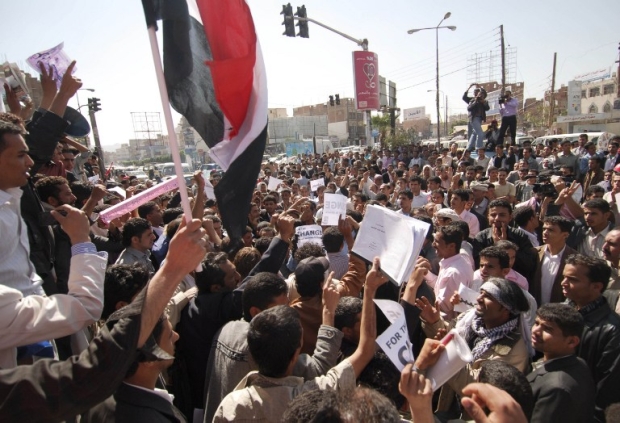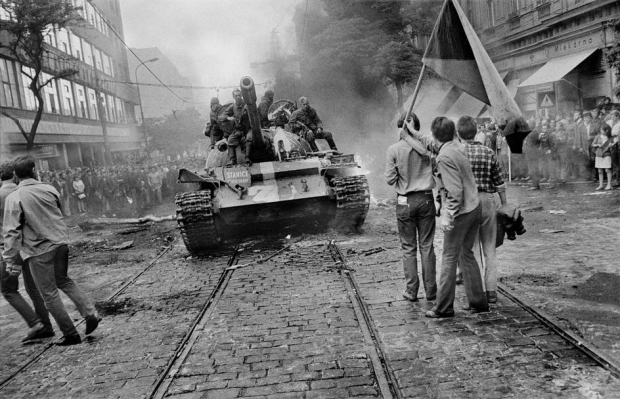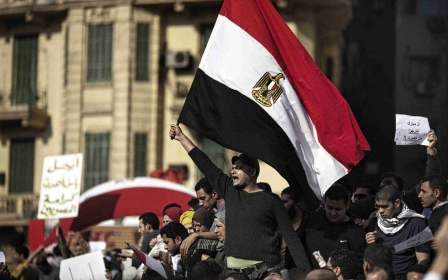For Arab revolutionaries, there is no choice but to continue the fight

After nearly six years of battling the regime, its Iranian allies and sectarian militias, the prospect of change in Syria seems farther away than ever before. It is certainly more distant than when the popular revolution erupted in March 2011. The tragedy of human loss and destruction is now compounded by despair, disappointment and frustration.
The history of nations does not stop at a single moment, the moment of failure and disappointment or even defeat
It is not difficult to list the reasons that led to this, nor is it difficult to finger those responsible for the massive losses incurred by the people, their towns and cities. Yet, the outcome is the same whether we agree on this and who is responsible or not.
This, of course, is what led to the emergence of voices saying that the Syrian revolution should not have happened in the first place, that the slogans were wrong and that the biggest responsibility for the Syrian tragedy is to be borne by those who raised the banner of change without understanding whom they were taking on, the forces that stood by the regime, or its determination to wage an existential struggle irrespective of the consequences.
This is an implausible argument. First, because the Syrian revolution, like all the Arab revolutions, was not the making of one party or one charismatic leader or a group of them. The Syrians took to the streets of their towns and cities in an Arab revolutionary climate, voluntarily, simultaneously and spontaneously.
As is now well-documented, it took two years from the eruption of the popular revolution before al-Qaeda and the Islamic State (IS) group began to establish themselves inside Syria.
Begging and pleading
Second, uprooting the regime was never the Syrian revolution’s primary goal. The revolution, in any case, did not have a proper united leadership to determine its objectives. The general mood of the early protest movement was reformist. It called for political, social and economic change. It would have been entirely possible for the regime to contain the mass movement had the ruling minority exhibited the slightest readiness to effect tangible changes in the structure of the government, and to end its boorish hegemony over state resources.
During the spring, summer and autumn of 2011, the regime was presented with proposals by elements close to it for a new constitution. Arab leaderships, both official and popular, known for their friendships with it, interceded and so too did its Turkish allies. Everyone tried, even begged, and there were numerous promises of support to put Syria on a reformist track to be led by the regime itself with the aim of rescuing the regime and rescuing the country.
It would be foolish to ignore the role played by the terrorist groups and their regional and international interventions in complicating the crisis. However, the primary and greatest responsibility falls on the shoulders of the regime and its sectarian allies who, right from the very beginning, treated the people’s movement and their demands as a zero-sum game: either the people and their political forces win or the ruling minority wins.
Perhaps an early indication of the bloody minority approach that led Syria to where it is today could be detected in Hassan Nasrallah’s famous speech in which he said: “Homs? Nothing is happening in Homs!”
Yet, a wider and more comprehensive look at Syria and the entire Arab region is called for. It was not only in Syria where the revolution and movement of change suffered a setback. This has been the case in all the Arab revolution countries.
Take Egypt for instance. Once the country saw the downfall of the ruling clique, a constitutional referendum and parliamentary and presidential elections, and after it seemed that the country was heading toward democratic transition, the revolutionary movement was thwarted by an overt military coup.
The coup regime did not only bring the dynamic of political change to a complete halt, but it sent Egypt into a situation that is much worse than the one against which the country's revolution had erupted in the first place. The regime repressed its opponents and persecuted them in the most bloody and savage way. The elected president and many political leaders and activists across the country were detained and thrown behind bars and thousands of Egyptians have been imprisoned.
Arab and non-Arab interventions have drowned Libya in a similar war of attrition that now threatens to deliver to power an army officer who is no less maniacal than Gaddafi. Even in Tunisia, which has so far been able to avoid the bloody confrontations that characterised the counter-revolution in the other countries, there is nothing to indicate that the promises of their revolution are on their way to being accomplished.
READ: The Arab Spring was neither a spring, nor only just for Arabs
Perhaps the Syrians erred when they took to the streets to demand their freedom without realising the extent to which the regime and its allies were ready to mobilise their troops and resources to repress the people and destroy their historic cities and inheritance.
But have the Egyptians, the Yemenis, the Libyans and the Tunisians erred too? Haven’t their revolutions too been aborted and their dreams of change destroyed? Haven’t Yemeni and Libyan cities too been destroyed? Haven’t thousands of Egyptians, Yemenis and Libyans also been killed and scores of thousands been detained with many more banished and forced into exile?
Lessons from Europe
On 23 October 1956, a student protest movement erupted in Budapest. Soon the student movement developed into a massive people’s revolution that spread to all parts of the country and was joined by millions of Hungarians. Within days, and despite the continued confrontations with the five Soviet divisions that had been deployed within Hungary since the end of WWII, the revolutionaries succeeded in bringing down the secret police organisation that was the regime’s main tool of repression and toppled the pro-Moscow government.
On 4 November, 17 Soviet military divisions were ordered to cross the Hungarian borders and join the five divisions that had already been there in order to quell the revolution with the power of arms. The Hungarian revolution was defeated and the Hungarians paid a heavy price: thousands were killed, more than 20,000 were detained and more than 200,000, who fled to other parts of Europe, became refugees. In 1958, the head of the reform government, Imre Nagi, and several of his comrades were tried and executed.
Even the Polish Solidarity Movement, which became a symbol for the victory of freedom in 1989, did not enjoy an easy ride. The movement, which was established in August 1980 as an independent labour union, was transformed within months to become a civil opposition current that had more than nine million members. In October 1981, General Jaruzelski rose to power in Warsaw, declaring martial law and launching a nationwide repression campaign that reached its climax in October 1982 with imposing a ban on Solidarity and declaring it to be an illegitimate organisation.
The Solidarity Movement was victorious in 1989 when it ended the rule of communism; and so were the entire peoples of Eastern Europe. In Hungary; Nagi was given a new burial in an official ceremony and the 23rd of October was declared a national day.
The history of nations does not stop at a single moment, the moment of failure and disappointment or even defeat. Human society moves along a flowing and continuous current toward uplifting the values of freedom and human dignity. No force can ever stop such a current.
- Basheer Nafi is a senior research fellow at the Al Jazeera Centre for Studies.
The views expressed in this article belong to the author and do not necessarily reflect the editorial policy of Middle East Eye.
Photo: Syrians protesting in 2011 (AFP)
New MEE newsletter: Jerusalem Dispatch
Sign up to get the latest insights and analysis on Israel-Palestine, alongside Turkey Unpacked and other MEE newsletters
Middle East Eye delivers independent and unrivalled coverage and analysis of the Middle East, North Africa and beyond. To learn more about republishing this content and the associated fees, please fill out this form. More about MEE can be found here.










